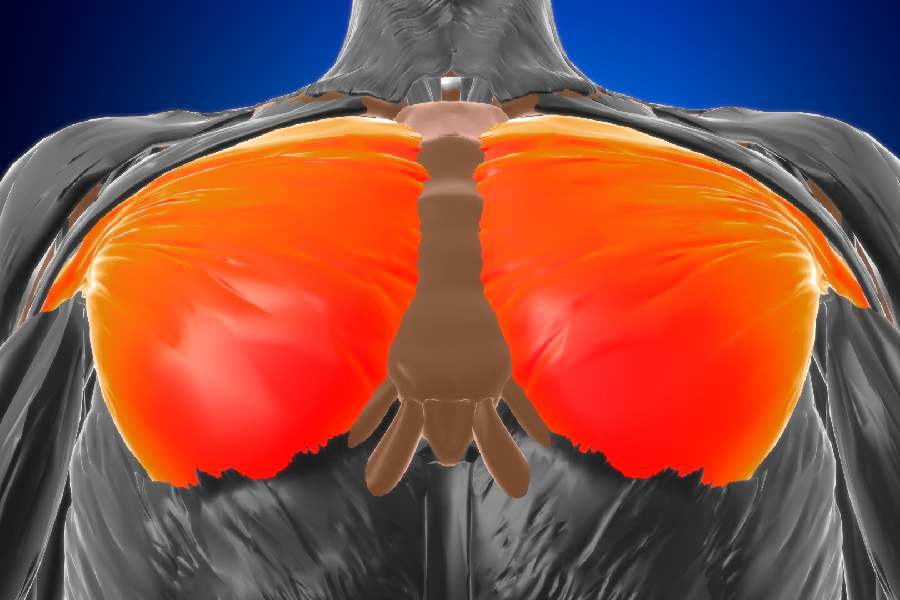Breast augmentation is one of the most common surgical procedures in the world. The high demand for this cosmetic feat has advanced the whole process and made every aspect of it relatively easy and convenient. Knowing how to relax chest muscles after breast augmentation will help with soothing pain and faster healing.
Chest enhancement is a highly advanced process, and women of all ages contribute to the high demand. The reasons for taking on this procedure can vary from person to person. More often than not, it’s to enhance the size and shape of the breasts, allowing for better looks and bigger confidence.
There are still some inconveniences associated with the process, as it requires an incision and implantation in the chest. This can sometimes result in pain or discomfort lasting up to a few weeks. Patients can implement various techniques that may help soothe the pain and enable functionality.
The article will discuss several chest relaxation methods to have an easier recovery after breast surgery.
[ez-toc]
How to Relax Chest Muscles After Breast Augmentation
The pain from breast enhancement surgery may be manageable with some proven alleviating pain methods. Patients will likely get prescribed medication. But, they can also opt for some over-the-counter medication, again under the guidance of their doctor.
Some additional products are creams that recovering patients may apply. Others are TENS devices that send small electrical current shocks to the affected area. Most of these methods may aim to numb the pain and prevent the nerves from signaling pain.
Furthermore, the alternative method to numbing the nerves with medication, which is always short-lived, is to implement some chest muscle relaxation techniques post breast augmentation. Relaxing the muscles may allow for improved circulation, possibly reducing the buildup of tension that stiffen the area and amplifies the pain.
Relaxation may speed up recovery and improve the mobility of the patient. Relieving tension in chest muscles after breast enhancement may help transition to regular daily activities.
The purpose of relaxation is to potentially reduce pain and allow the patient to regain functionality, engaging in activities with relative ease.
About the chest muscle
The chest is not a single muscle. It is a muscle group divided into two main parts: pectoralis major and pectoralis minor. The pectoralis major is usually subject to manipulation during breast augmentation; hence we’ll talk more about that muscle.
It is divided into two parts, the upper chest, called the clavicular head, and the lower chest, called the sternal head. The upper chest muscle is near the collarbone, while the movements that mostly rely on it are the arm and shoulder flexions.
The lower chest is near the breastbone, and it’s usually bigger than the upper chest. The main movements associated with this muscle are arm adductions, horizontal adductions, and internal rotations.
Relaxing chest muscles after breast augmentation requires implementing both general and specific techniques. It may promote healing by reducing the strain on the incision area and relieving soreness. Moreover, it may act preventatively against common complications such as implant displacement and capsular contracture.

Source: shutterstock.com/ Photo Contributor: mybox
What Are the Causes of Pain After Breast Surgery?
There are numerous reasons why people may feel different levels of pain and discomfort after chest augmentation. The different tolerances of pain and the type of incision and implant play a major role in the outcome.
There are various types of incisions, each with flaws and benefits. The cut can be beneath the breast, around the areola, or in the armpit, and it’s to insert the implant.
Similarly, there are different types of implant insertions, depending on the patient’s preferences and the doctor’s recommendations. The implant can be inserted behind the breast tissue or the muscle, each impacting the end result differently in terms of discomfort.
The tolerance to pain is genetic and unique for every individual. Some people are more sensitive than others, and it may result in more pain or discomfort. It is important to prepare for the process and receive guidance from your surgeon.
Some pain and discomfort may be avoided simply by losing weight, quitting smoking, and adopting a healthy lifestyle prior to the surgery. These modifications may improve blood circulation and thus improve the healing capacity. They may also reduce the tendency for inflammation.
Methods for Relaxing Pectoral Muscles After Breast Augmentation
Chest wall tightness is fairly common in the post-surgery period. It can cause mild discomfort and a sensation of pressure. In some cases, it can lead to difficulties with taking deep breaths and feelings of heaviness in the chest.
Techniques and guidelines for relaxing the chest may vary depending on the specific demands of the situation. Generally, there are several recommended relaxation methods for the patient to feel better and have a better range of motion.
Here is how to help muscle relax after breast augmentation:
Stretching
Stretching should be performed with heavy caution and mindfulness of the situation. Too much stretching can aggravate the injury and cause pain.
When done properly, stretching may increase blood flow and relieve the buildup of tension in the pectoral muscles. The improved blood flow may improve the recovery speed as it allows more nutrients and oxygen to enter the tissue and nurture the wound.
Additionally, stretching may relieve tension by elongating the muscle fibers, which possibly has a soothing effect on the area.
You can perform partner-assisted stretching, or you can get professional help. Depending on your flexibility from before the surgery, you can use additional props or equipment if you know the techniques.
Stretching may even be helpful if you start practicing before the surgery, as more flexible muscles tend to heal faster.

Source: shutterstock.com/ Photo Contributor: Lopolo
Thermotherapy
Thermotherapy can mean applying either hot or cold to the targeted area. However, cold blocks pain signals and may provide short-term relief. You may apply a warm compress or a warm heating pad to relax the pectoral muscles. Heat has a similar effect as stretching, possibly increasing blood flow and improving circulation.
Heat may dilate the blood vessels, expanding them to have more capacity to flow a larger amount of blood into the area. Blood carries oxygen and vital nutrients, which may promote the healing process.
A warm shower or a bath may have a similar effect as frequent application of heat may have many long-term benefits.
Massage
You can perform the massage yourself or seek professional treatment from a massage therapist. Either way, massaging may go a long way in relaxing the chest and promoting a smooth recovery.
As with every soothing method, it may increase the blood flow and aid the healing process. Professional therapists can target specific trigger points that may relieve tension and lower the irritability of the nerves.
Another massage approach that may be effective is scar tissue management, which involves the manipulation of the incision spot. The scar tissue may cause discomfort, and ensuring faster healing may decrease the swelling and allow a bigger mobility.
Massages are known for their calming effect on the mind and body. They’ve been a go-to relaxation method for thousands of years. Massages may be most effective when combined with other soothing methodologies. Such are heat therapy and stretching.
When performing self-massage, it’s important to implement caution. This may help you avoid harming or aggravating the surgery wound. Use recommended gels and lubricants to reduce hand and skin friction.
Breathing
Breathing exercises may potentially improve the patient’s recovery after breast augmentation. The effects of proper breathing may be broad. They involve not only physical benefits like enhanced oxygenation but also mental. They could improve the person’s concentration and reduce stress.
One of the most common discomforts after a chest augmentation is feeling pressure when breathing normally. This is especially true in the initial stages of recovery. Gradually, the discomfort goes away as the wound heals.
Breathing techniques can be implemented from the start of the postoperative period. Patients can practice them until complete recovery and beyond.
Combined with other methods, classic breathing exercises may have therapeutic effects. The classic breathing techniques include deep breathing and hand-controlled abdominal breathing. So, such chest muscle relaxation exercises following breast surgery may be of good help.

Source: shutterstock.com/ Photo Contributor: fizkes
Frequently Asked Questions
How soon after chest-enhancing surgery can I start implementing relaxation techniques?
You will receive guidelines from your surgeon on the timing of the techniques. But generally, you may aid your recovery immediately after surgery.
Some of the techniques may require a slightly longer period in order for the incision area to be able to heal properly, such as stretching.
Can I do relaxation techniques on my own, or do I have to hire a professional?
You can do some of the techniques on your own. Patients generally don’t require help for applying heat and light self-massage. Yet, some advanced massages and stretching may require a professional’s assistance.
How often should I practice relaxation techniques?
It depends on your body and the speed of your healing process. The general recommendation would be to do them multiple times a day, but it may be required to do them less often in your specific case.
It’s imperative that you listen to your body and communicate with the medical professional regarding your recovery.
Is stretching dangerous in the immediate period after surgery?
Stretching should be reserved for after the initial period of recovery. The first couple of times, you can call upon a professional that knows how to relax chest muscles after breast augmentation. Later, you can continue to practice on your own.
